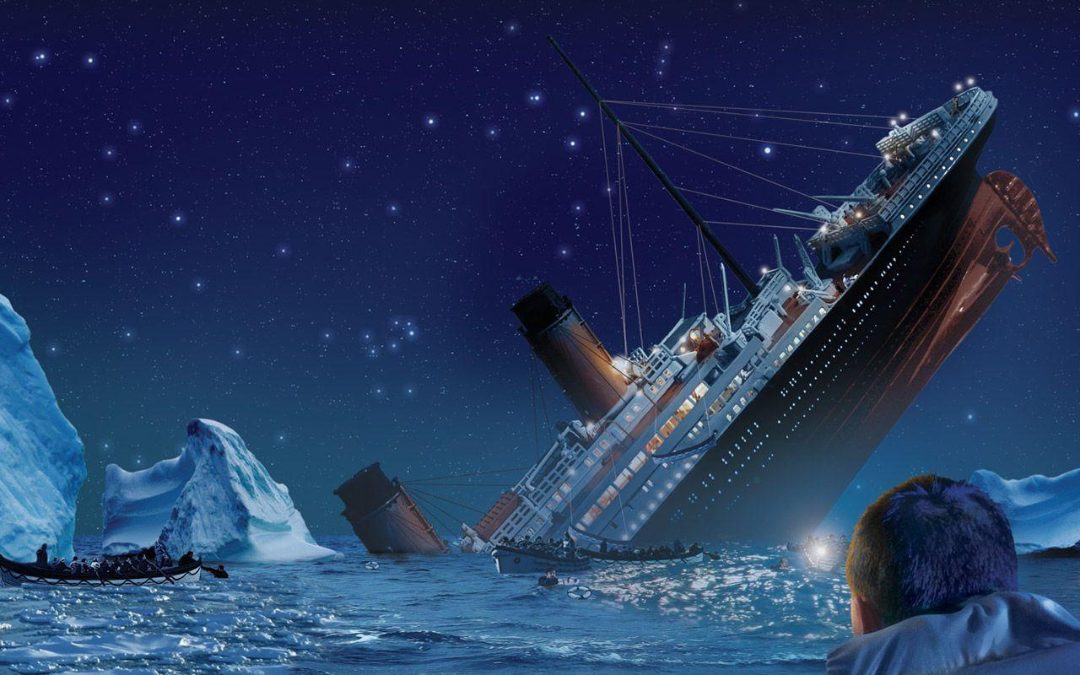If the Titanic’s tragic crash with the iceberg had never occurred, here is how the tale of the ship would have ended. The RMS Titanic hit an iceberg and sank on her maiden voyage just before midnight on April 14, 1912, killing 1,496 people in total, including passengers and crew.
The catastrophe not only horrified everyone, but it also gave rise to a myth that endures to this day. The tragedy has been the subject of several movies, novels, songs, and even stage plays, which has ensured that the tale remains well-known across all age groups.
But what if the powerful warship had not capsized? Would Titanic receive the same amount of attention and renown on a worldwide scale? How will she do in her career as a passenger ship?
In fact, we may have a good idea of how she would have likely experienced things. We simply need to consider her sister, the RMS Olympic, who is less well-known.
White Star Line built the second Olympic Class ship, Titanic, in an effort to increase the number of passengers travelling across the Atlantic. On the verge of the twentieth century, traffic on the North Atlantic route was at its pinnacle, and fierce competition existed between competing maritime corporations.
The Olympic Class vessel design favoured size and luxury above speed, which was primarily the focus of White Star’s fierce competitor Cunard Line. In Belfast’s Harland & Wolff shipyard, Olympic and Titanic were constructed side by side.
Titanic’s keel was laid three months after Olympic’s, in December 1908. The two sisters were nearly similar to one another. So much so that the vast majority of images of the Titanic that are available online are actually images of the Olympics.
Due to the Titanic’s surprisingly short lifespan and the fact that she was the second ship of her class, original photographs of the ship are hard to come by. Being the first, Olympic naturally attracted the greatest attention at the time.
Olympic had a very successful career that lasted for approximately 25 years. Titanic probably wouldn’t have fared any better or worse if she hadn’t hit the iceberg. She would have attracted media attention and temporarily held the distinction of largest ship afloat after completing her maiden trip.
The SS Imperator of the brand-new Hamburg-American Line will eventually win this title in June 1913. The Titanic would have finally been taken over by the Admiralty with the start of the First World War in 1914.
She might have been sent to work as a troopship or a hospital ship, depending on the situation. While the Britannic, the final member of the Olympic Class, was transformed to a hospital ship, Olympic was ordered to serve as a troopship.
Britannic never made a single transatlantic voyage, much like her misfortunate sister. She sank in the Aegean Sea on November 21, 1916, while doing military duty. In the Great War, she was the biggest ship to be lost. The Titanic would have likely experienced a decade of success if she had avoided the war’s losses.
Passenger lists progressively increased to pre-war levels during the “roaring 20s.” Similar to her sister Olympic, Titanic would have been upgraded to burn oil rather of coal, increasing efficiency and lowering operating expenses. Her loyal followers would have been eager to cruise solely on her, making her a reasonably well-liked ship.
Unfortunately, the international economy stalled as a result of the Great Depression, which began in 1929 and lasted far into the 1930s. The United States government’s anti-immigration policies pushed the shipping corporations to their knees, and passenger lists decreased once again.
Because of the dire circumstances, Cunard and White Star, two previous competitor corporations, were compelled to unite in 1934. Cunard-White Star opted to sell the older ships for scrap as a way to reduce its operating expenses because the low ticket demand reduced the requirement for a sizable fleet.
Famous and well-liked ships like Mauretania and Olympic were traded in for the aforementioned reason. As newer, more advanced cruise ships made older, more traditional ones seem obsolete and expensive to operate, Titanic would undoubtedly meet the same way.
Titanic was a product of the so-called “Belle Époque,” a period when World Wars were seen as unimaginable and when the belief in unending human development predominated.
Her builders never quite imagined a world economic catastrophe that would linger for many years. In the end, it proved to be too much for Olympic, and Titanic couldn’t have performed much better, according to evidence. Most likely, the formerly powerful ship would have perished in obscurity.
As a result, if the Olympic had not sunk on her first trip, we might generally anticipate the Titanic to be no more renowned than she is today.
The majority of people would not be familiar with the word “Titanic,” and undoubtedly no plays, songs, movies, or novels would have been created to honour her life. Outside of works on maritime history and ocean liners, she would have remained mostly forgotten.


